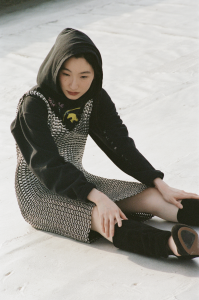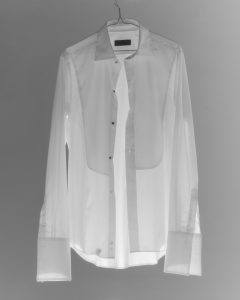Paul Vincent introduces Alex Jackson to the story behind S.E.H. Kelly, a casualwear brand born on Savile Row
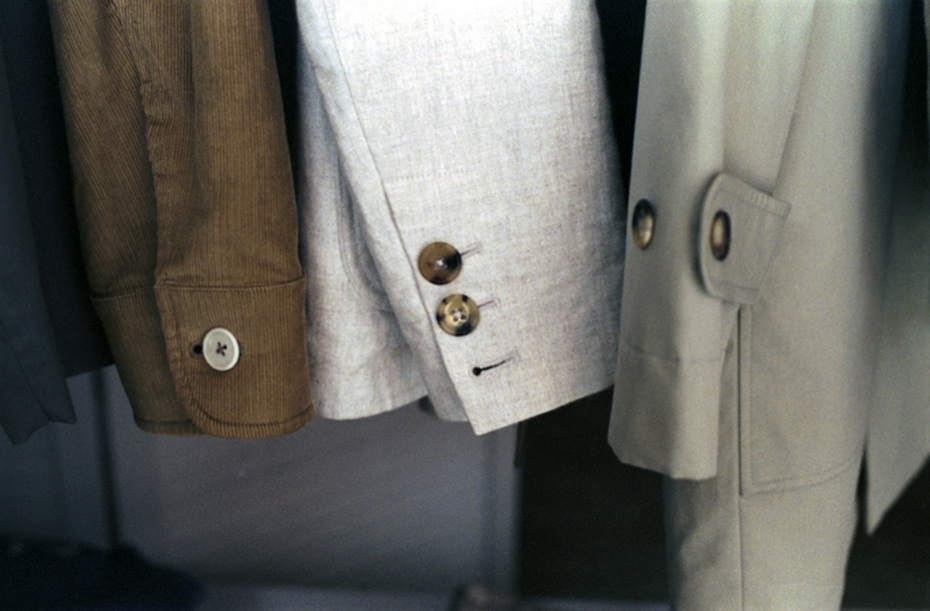
Photography Ross Trevail
“Sara knows about the number of buttons a mac should have, the spacing between buttons, how wide a belt should be, things like that,” Paul explains, his coffee mug suffering mild gesticulation. “She worked at Hardy Amies for about five years, on Savile Row, where they make things to very precise, exacting, standards…” he pauses. “And then I’ll come and stick my oar in!” he laughs, “I have all the stupid questions.”
Paul is Paul Vincent, one half of emerging British menswear brand S.E.H. Kelly. “I’ll say things like, ‘Sara, why’re we putting the collar that high? Trust me, a bloke doesn’t want to wear a collar that’s up there, let’s just move it down a bit,’ continues Paul.
As the other half of the duo, Sara Kelly “is the brains behind the making side of things,” affirms Paul. And it’s she who in 2009 left Savile Row to set out for herself. “She wanted to apply the same making processes – luxury cloth from British makers, British factories, small work rooms – but to casualwear,” explains Paul.
The young pair design together, from different perspectives but organically: “Initially, I came on board to do the stuff Sarah needed doing – bits of advertising, the website. But while she was doing that first collection I was always, ‘Why don’t you use this cloth for that design instead?’ After about six months we were picking up an equal share of the work.”
Paul’s ‘stupid’ questions (not to mention Sara’s bright ideas) also get put to the many exclusively British makers the pair uses, and visit virtually daily.
“It works well because they’ll say, ‘well, maybe we could do it that way…’” reveals Paul. “There’s a lot of very orthodox practise in the fashion world, especially when a machinist is 70 years old and the pattern cutter’s the same. So it’s good to create that tension sometimes. Our stuff gets born out of a bit of give and take, whether between Sara and myself or between the makers and us. There’s scope for all that and that’s good.”
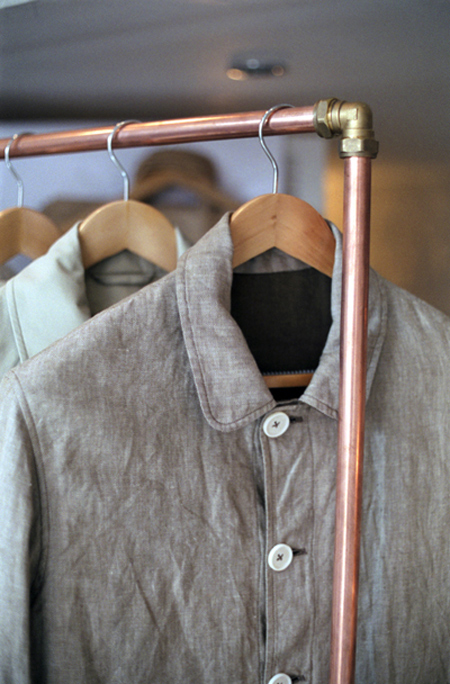
It certainly shows in S.E.H. Kelly’s product, which remains more progressive than most other brands’ on the ‘heritage’ scene – all too many of whom seem unimaginatively wed to ideals of what workwear should be, fetishising it.
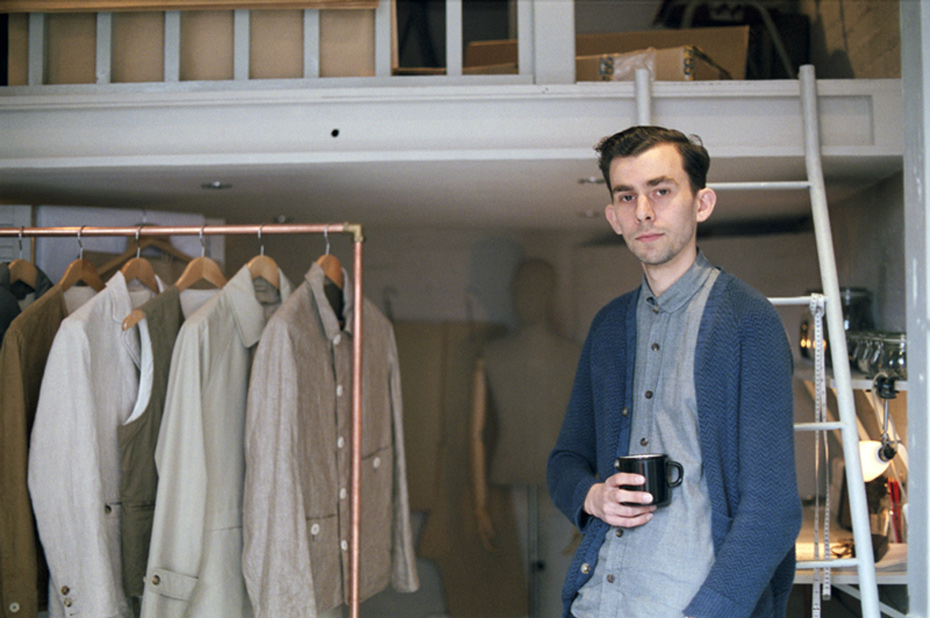
Paul describes their style as “workwear made for today, not the 19th century” – useful things with multiple purposes. “While we do take a lot of influences from that old workwear stuff we like to make them more contemporary, reconstruct it for more present day scenarios,” he says. “Of course, we’ve got that safety-net of knowing that our makers will be able to do things very, very well even with our ‘stupid’ ideas.
This is down to impeccable sourcing and discerning choices of cloth-maker, something Paul’s quick to attribute to Sara: “she had all these contacts with various mills and factories, a lot of them with very prestigious client lists but because Sara had a rapport with them, we got our foot in the door. “We get a lot of satisfaction from it. Often, we’ll get recommended to the next place by word-of-mouth,” says Paul. “It’s nice to have something pass from one person to the next; it’s satisfying to have a regional aspect and continuity to a product. Our things have a nice flow to them in that regard and it’s always good to get as close to the source as we can – to the materials but also to the knowledge. It means there’s a story you can tell.”
The pair are also adept at telling those great stories. For anyone yet to discover it, the online world of S.E.H. Kelly is a joy, a winning combination of photography and detailed background notes championing the various making processes and people that the pair work with.
“It’s hard to get across the work you put into a garment online, a nice picture is still only a nice picture,” states Paul. “So it’s important to have a story, to make the product as transparent as possible. If a bloke’s spending three-hundred quid on a jacket it’s only right that he should be told where and how it was made, some justification you know?”
But reading their website, or taking their pieces in hand, it’s clear there’s more than justification at work, there’s real love; a dedication to their product, its past, present and future, that’s held over and above anything – including the fact that by using their crew of British makers Sara and Paul incur the burden of extra costs, almost at every turn. No small decision for a young brand.
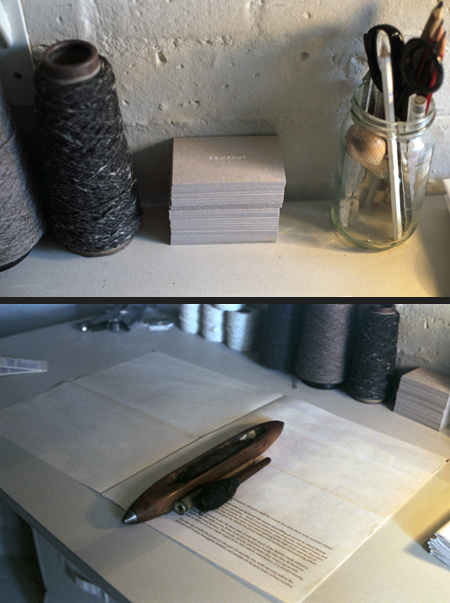
“We don’t want to be rich, we want to make bloody good garments,” states Paul. “We’re not trying to pull the wool over anyone’s eyes. A lot of blokes today know a lot of stuff. It’s no good just having things looking great online, pixel-perfect, in the real world, dealing with real blokes, you have to replicate all that. If you look after your product, making sure it’s the best it can be, and is a fair price, then people will like it. And that’s all helped along by joining the dots between our makers.”
Long live stupid questions, eh?


